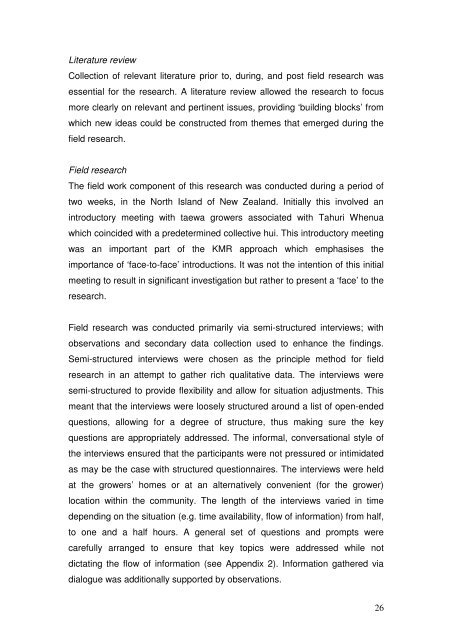Lincoln University Digital Dissertation - Lincoln University Research ...
Lincoln University Digital Dissertation - Lincoln University Research ...
Lincoln University Digital Dissertation - Lincoln University Research ...
You also want an ePaper? Increase the reach of your titles
YUMPU automatically turns print PDFs into web optimized ePapers that Google loves.
Literature review<br />
Collection of relevant literature prior to, during, and post field research was<br />
essential for the research. A literature review allowed the research to focus<br />
more clearly on relevant and pertinent issues, providing ‘building blocks’ from<br />
which new ideas could be constructed from themes that emerged during the<br />
field research.<br />
Field research<br />
The field work component of this research was conducted during a period of<br />
two weeks, in the North Island of New Zealand. Initially this involved an<br />
introductory meeting with taewa growers associated with Tahuri Whenua<br />
which coincided with a predetermined collective hui. This introductory meeting<br />
was an important part of the KMR approach which emphasises the<br />
importance of ‘face-to-face’ introductions. It was not the intention of this initial<br />
meeting to result in significant investigation but rather to present a ‘face’ to the<br />
research.<br />
Field research was conducted primarily via semi-structured interviews; with<br />
observations and secondary data collection used to enhance the findings.<br />
Semi-structured interviews were chosen as the principle method for field<br />
research in an attempt to gather rich qualitative data. The interviews were<br />
semi-structured to provide flexibility and allow for situation adjustments. This<br />
meant that the interviews were loosely structured around a list of open-ended<br />
questions, allowing for a degree of structure, thus making sure the key<br />
questions are appropriately addressed. The informal, conversational style of<br />
the interviews ensured that the participants were not pressured or intimidated<br />
as may be the case with structured questionnaires. The interviews were held<br />
at the growers’ homes or at an alternatively convenient (for the grower)<br />
location within the community. The length of the interviews varied in time<br />
depending on the situation (e.g. time availability, flow of information) from half,<br />
to one and a half hours. A general set of questions and prompts were<br />
carefully arranged to ensure that key topics were addressed while not<br />
dictating the flow of information (see Appendix 2). Information gathered via<br />
dialogue was additionally supported by observations.<br />
26
















